The word Shantiniketan literally means “abode of peace”. Maharshi Debendranath Tagore, the father of the Nobel laureate Rabindranath Tagore, dreamt of a place where people from every religion, caste and creed could find peace of mind through meditation, prayers and with closeness to Mother Nature. He established an ashrama here in 1863.
Bhubandanga was the original name of Shantiniketan and, it belonged to Sinha family. While on a trip to Birbhum district of West Bengal, the picturesque beauty of the place along with majestically canopied Dita Bark (Bengali: Chatim, ছাতিম) trees charmed Maharshi Debendranath’s mind. Sinha family, being in friendly relation with Debendranath, wanted to hand over the entire land as a gift. Paying a token amount of rupee one, Debendranath registered the land in his name in 1862 and in the following year, the ashrama was built.
Rabindranath Tagore envisaged a school amidst natural environment, beyond the confinement of the four walls of a classroom. He had the most modern visions on education; he firmly believed education doesn’t mean acquiring degrees, it is a deep-rooted understanding of one’s own culture and that of the whole world. On December 22nd, 1901, Rabindranath started an experimental school in Shantiniketan with only five students.
After receiving the Nobel Prize in 1913, the school was further developed and Vishva Bharati University was established. With time, Shantiniketan has evolved and adapted itself to keep pace with the fast-changing world. But, the quintessence of learning is still followed in the way the Great Poet wanted it to be. The university is the melting-pot of different cultures all over the world.
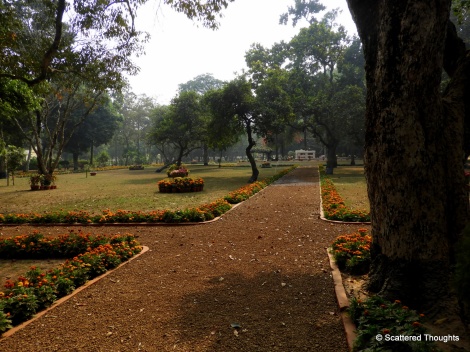
- Inside the campus
I have visited Shantiniketan a number of times. The beauty of Mother Nature is different here with the characteristic rugged red terrain of Birbhum and trees like Sal, Simul, Palash, Chhatim and many others. Nature here changes herself in each season like a sorceress with an invisible magic wand. During winter, spring and monsoon, festivals like Poush Mela, Basontotsab and Barsha Mangal are celebrated here. Basontotsab, as the name suggests, is related to Holi or Dol Yatra; a wonderful celebration of colour, music and dance.
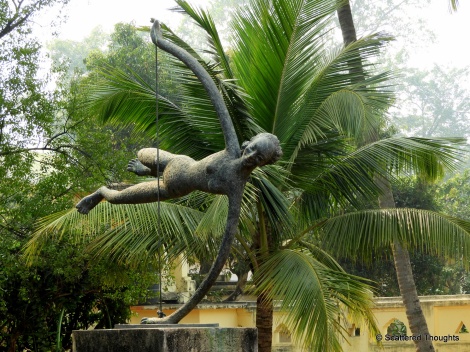
Inside the Campus: Statue made by sculptor K.S. Radhakrishnan
This year, I visited Shantiniketan last month when there was a sharp chill in the air. This time, to my surprise, I spotted a plethora of avian species in the surrounding areas of Shantiniketan, namely Prantik.

Chestnut-headed Bee-eater/ Green Bee-Eater
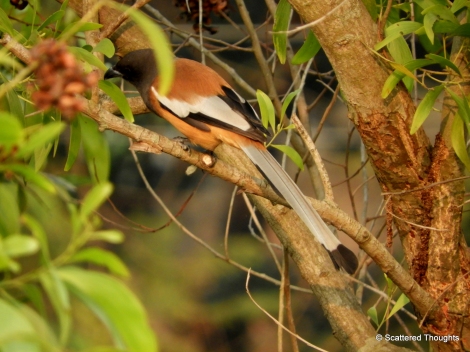
Rufus Tree Pie

Hoopoe bird
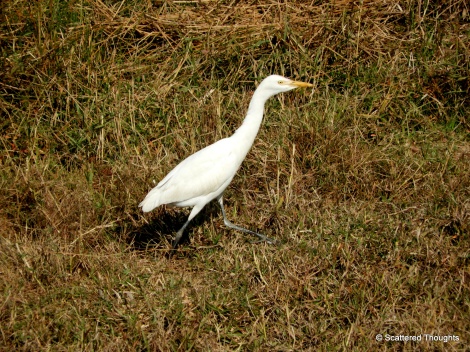
Egret

Red-vented Bulbul
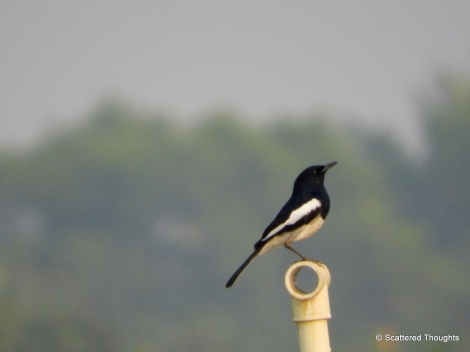
Oriental/Indian Magpie Robin

Ashy Drongo
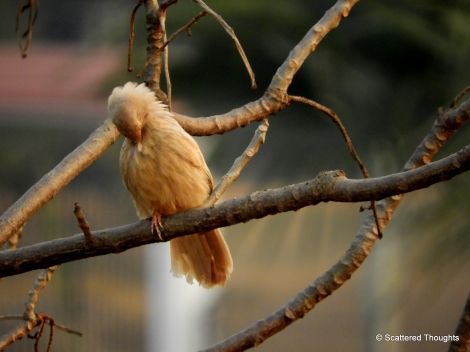
A Barbet (sleeping)

Asian Koel
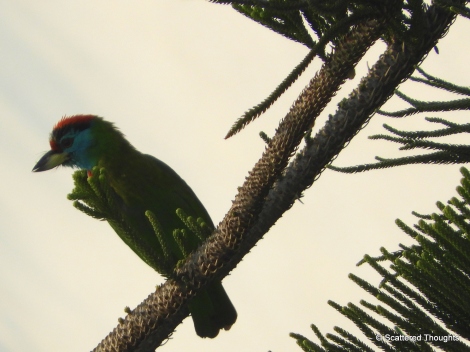
Blue-throated Barbet

Greater Coucal
Shantiniketan has much to offer to the tourists. The sprawling university campus (you’ve to hire a toto car to cover all the different departments in the entire campus (battery operated rickshaw), the local market, Sonajhuri’r Haat, showcasing handicrafts and different types of artefacts made by local people and students, temple at Kankalitala, Nature Art Museum, Shilpa Gram near Ballavpur Deer Sanctuary are the major attractions.
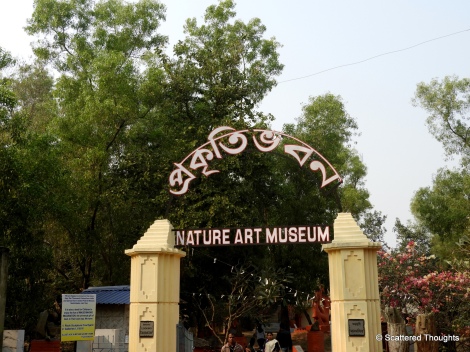

Wooden Owls at Sonajhuri’r Haat
: How To Reach :
By Train: Bolpur is the railway station for Shantiniketan and train is the most convenient way to get in here. It takes about three hours to reach Shantiniketan from Howrah. Shantiniketan Express, Howrah-Suri Intercity Express, Visvabharati Fast Passenger are the most popular ones.
By Car: It takes four to five hours by car via NH19 and NH119. There is another route, but I prefer this one.
: Where To Stay :
Shantiniketan and Prantik, adjacent town of Shantiniketan, have a plethora of hotels and resorts. My advice is to book prior your tour to avoid any problem. The rents generally vary according to the seasons, highest during the festivals.
To know more about Tagore and his Shantiniketan, you can visit Ruma’s blog.




Pingback: Rabindra jayanti | 25th baisakh | introduction of rabindranath tagore·
Shantiniketan is always a favorite. It is the best post I have ever read on Shantiniketan. Beautiful shots!
LikeLiked by 1 person
Thanks so much, Moon. So happy that you are back to blogging again… ❤
LikeLike
Wonderful narration and lovely photographs
LikeLiked by 2 people
Thanks so much!
LikeLike
Wow! thanks for sharing this great post! All the picture are much beautiful.
LikeLiked by 2 people
Thanks so much! Visited your site, it looks good, a friendly and supporting site for the travel enthusiasts…. 🙂
LikeLike
very nice..maniparna
LikeLiked by 2 people
Thanks a lot… 🙂
LikeLike
I first heard of Shanti Niketan when I was a little 10 year old. There was someone we knew who had studied there. Since then, I have wanted to visit the place. As I went through your post, read about the ashram and looked at your pictures, the desire has gone stronger. Thank you for sharing. It’s beautiful and I am sure the sense of peace that one can feel there is out of the world.
LikeLiked by 1 person
You are right, Parul. Shantiniketan has a unique ambience, it’s tranquility is palpable. I hope you’ll visit the place some day. Thanks a lot for stopping by… 🙂
LikeLiked by 1 person